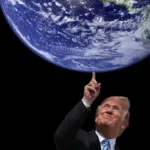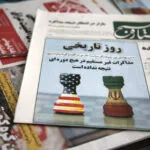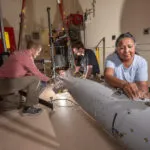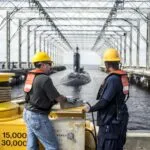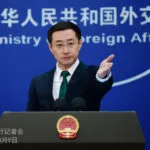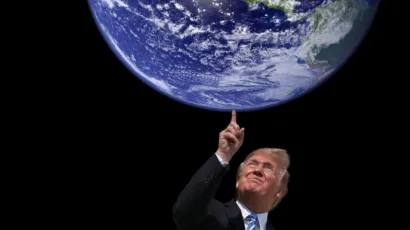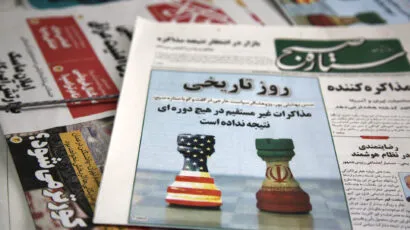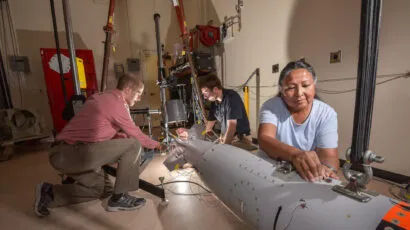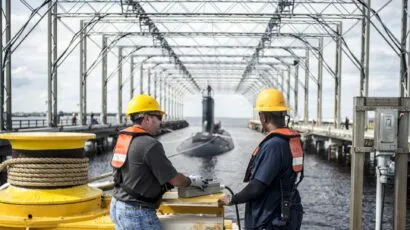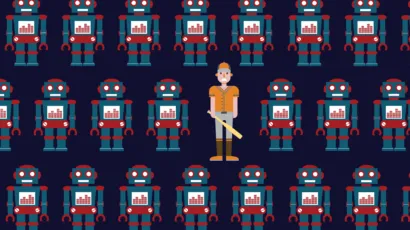To Hanoi and back again: An interview with Bruce Cumings
By Thomas Gaulkin | February 27, 2019
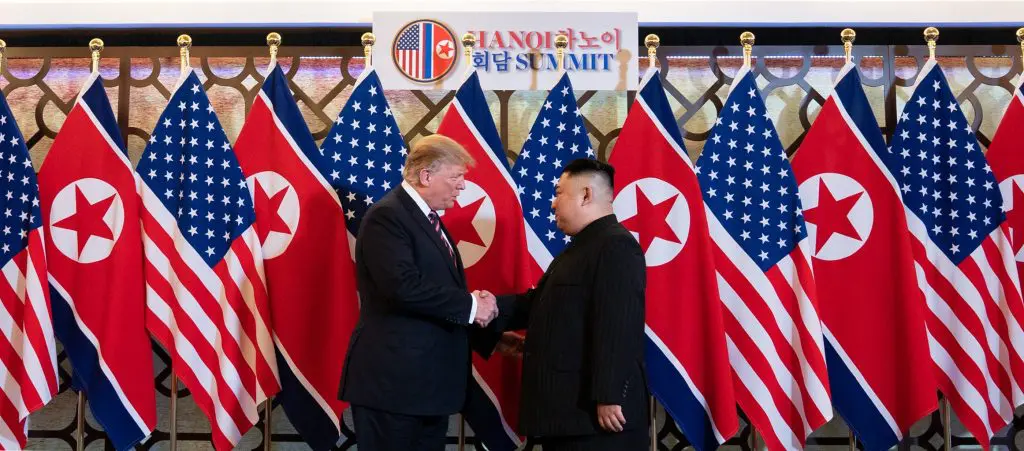
Donald Trump has met with Kim Jong-un for the second time.
The two leaders traveled to Hanoi, Vietnam, to continue talks they began a year earlier during their bizarre first encounter in Singapore. That meeting produced a vague agreement that mostly served to frustrate those looking for a plan to roll back North Korea’s nuclear arsenal.
North Korea has stopped testing intercontinental ballistic missiles (ICBMs) and nuclear bombs in the eight months since, but it also appears to have kept part of its nuclear program going while allegedly continuing to evade the US sanctions regime. In the hours before the summit began, word spread that Trump’s own advisors lacked confidence in his commitment to eliminate North Korea’s nuclear weapons systems, and that the two sides might be preparing to sign a peace declaration that would all but end the Korean War, technically ongoing since an armistice was signed (by the United States, North Korea, and China) in 1953. The official schedule listed several working sessions along with a small “social dinner” with the two leaders and their top advisors. But, as before, there were few other indications of what the summit will bring.
It bears repeating that the summit in Vietnam represents only the second time any sitting US president has met with his North Korean counterpart. Historian Bruce Cumings has been closely watching the ups and downs of US-North Korean relations for decades. He visited Pyongyang several times during the 1980s, and has long argued that Americans dismiss the North Korean regime and people at their peril. As the two countries’ delegations were checking into their hotels, Cumings, a history professor at the University of Chicago, spoke with the Bulletin about some of the most vexing misperceptions of North Korea, its mastery of game theory and economic potential, the curious triumph of Trump’s foreign policy ignorance, and who exactly deserves a Nobel Peace Prize.
The Bulletin: We’re talking as the Hanoi summit is getting underway. You’ve paid close attention to North Korea through many twists and turns. Looking at some of what is reportedly being proposed at the negotiating table, how do you feel about the prospect for a peace declaration that hasn’t been realized for nearly 70 years? What’s it like to suddenly see things turn this direction?
Bruce Cumings: I have trouble appreciating the suddenness of it. I’ve lived with the Korean problem since I was a graduate student, and I’m now in my seventies. I’ve followed along as, you know, every year something hopeful, something terrible—and then nothing pans out.
Who would ever have predicted in 1975 when the Vietnam War ended that North Korea and the United States would have a summit in Hanoi? Which we were bombing then, right? In that sense, the summit is a nice coda to the end of the Vietnam War.
But an end to the Korean War was prefigured in the late 1990s by negotiations between the Clinton Administration and North Korea with South Korean consultation. … There were four power talks to end the Korean War involving China, the United States, and the two Koreas. This was a very significant concession by North Korea because [they] signed the 1953 armistice, but South Korea didn’t. And for decades, they said, “We’ll not talk to the South Koreans about the armistice,” because they didn’t sign it.
But they made that concession. And there were these four power talks. … So that really prepared the ground for what’s going on today. But it’s one thing to prepare the ground and another thing to do it. If they actually do it, it will be a very big step.
Bulletin: In the 12 months before Kim Jong-un’s New Year’s speech last year, the world endured a series of frightening developments: hydrogen bomb test, several ICBM tests, bellicose rhetoric on both sides. It was inconceivable then that we’d be talking about ending the Korean War barely a year later. How did we get from a “fire and fury” to “social dinners” so quickly?
Cumings: I think what Kim Jong-un was doing in 2017 was pressing his luck, showing what they were capable of. But it’s so interesting to me that it stopped short of them proving that they could marry a nuclear warhead to a long-range missile. I mean, the North Koreans, for all their horrible policies and the way they treat their own people and all of that, they’re brilliant in terms of nuclear deterrence and game theory. By showing that they could launch a missile 8,000 miles, but then stopping, they provided an opportunity for the United States to try and halt it before they actually developed a capability to hit the United States with a nuclear warhead. And then he turned around, Kim did, in January of 2018, and started a peace offensive with the South Koreans and the winter Olympics.
I spent a lot of my career underestimating the North Koreans, and I think a lot of people still do that, because the regime looks like an opera bouffe of some sort as well as a cruel regime. But they’re very well prepared, and they know what they’re doing.
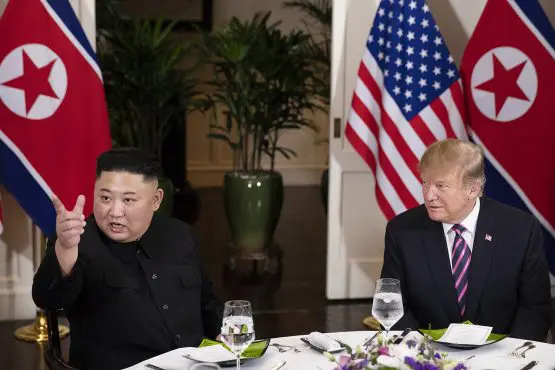
Bulletin: What about Trump? Does he know what he’s doing?
Cumings: In the past, every president would consult with their advisors about North Korea. The foreign policy establishment has 15 or 20 things they believe the North Koreans have to do before we can do much for them, and the list begins with nuclear weapons, a list of missiles, and goes to things like the human rights situation in North Korea. But Trump bypassed all of that by just saying, “I’m gonna meet with the North Korean leader.”
A friend of mine who went into the State Department told me that when Obama came in, they just put a memo on his desk: “Here’s where to pick up from what [George W.] Bush didn’t do to get back to the Clinton policies.”
Trump doesn’t read memos. I doubt that he even wants to have much to do with people who negotiated with North Korea before. So he doesn’t know our relationship with North Korea. He doesn’t know the history of it. But by virtue of being the president that he is, he’s opened up a realm, a space for people to do things. I notice how people pussyfoot around giving Trump credit for that, including myself, because 99 percent of his policies I would oppose. But nonetheless, he is a unique figure … and if he wants to do something, he does it. I give him a lot of credit for breaking through at the Singapore summit.
I used to teach a very good book by James Der Derian called On Diplomacy. It’s now out of print, unfortunately. But he starts off that book by saying that diplomacy arose in the world for enemies to deal with each other, not for friends to deal with each other. The United States has ignored that principle with North Korea for more than 70 years. We never have recognized them. We’ve tried to isolate them. And that might’ve been a good policy 70 years ago, but it hasn’t ever worked. Trump just cuts through all of that in an audacious way. He doesn’t even know how audacious he’s been, I think.
Bulletin: Another audacious actor in all of this has been South Korean President Moon Jae-in.
Cumings: I think President Moon has been the most important leader in this whole process, because he almost immediately re-established the engagement policy, the so-called Sunshine policy that former South Korean president Kim Dae-jung inaugurated in 1998 and has managed to drive down the tension in Korea dramatically. Some forces have been withdrawn from the DMZ or have been drawn back. They’re surveying the railways in North Korea to hook them up with South Korean railways. They’re talking about reopening the Kaesong export zone, which is very important. And all of this comes from an impetus out of Seoul more than Pyongyang or Washington.
The one thing they lack is the ability to get sanctions lifted so [North Korea] can do the Kaesong export zone or the railways or whatever. That’s one concession that I hope the United States will make at the Hanoi summit. The United States can maintain a sanctions regime in general, while allowing South Korea to operate with North Korea. It’s very, very important because economic exchange is really at the core of President Moon’s strategy toward the North. He wants to draw them out and get them involved with the world economy. So I hope that some sort of dispensation can be allowed for South and North Korea to engage economically.
The north Korean problem is similar to the Chinese and Vietnamese problem in that you’ve got a communist system, but in order to grow and satisfy the demands of the population and build in the 21st century, they essentially have to engage with the world economy. And the risk of that, of course, for China and Vietnam is that they would be in effect captured by the gravity of the capitalist world economy. Well, we’ve had 30 years of that with Vietnam and 40 with China and they have been, in effect, captured by the gravity of the capitalist world economy. But they haven’t lost power. And so North Korea, on that scale, can feel pretty confident that they can interact in the same way and the elites and the Workers’ Party won’t lose power.
And I think Trump would love it. He says we can build condos on beaches in North Korea. Yesterday he said they’re going to grow faster than anybody else. I think he would love it if North Korea did that, and he doesn’t seem inclined to try to pursue regime change with North Korea. (He seems to love not just Kim Jung-un, but all the other dictators like Putin and Sisi and so on.)
But what happens after Trump? What happens after Moon’s five years in office in Seoul? When the right-wing government was in power like the two before President Moon, they were just sitting around waiting for North Korea to collapse so they could take it over. So North Korea needs a much stronger security guarantee than they’ve had in the past.

Bulletin: Ok. We can’t go any further without trying to define denuclearization, which is the top negotiating concern of most diplomats and expert observers, but also the least well-defined. Some of Trump’s own aides have expressed concern that he’s lost sight of the goal, that he doesn’t really care anymore whether they denuclearize within North Korea. What kind of denuclearization should the United States (not to mention South Korea, Japan, etc.) expect to achieve, and live with?
Cumings: Trump said yesterday, “If they’re not testing, I’m happy.” And that may indicate how Trump is going to go forward to the next election… He’s happy with North Korea if North Korea doesn’t test. I have no idea what Trump really knows. The CSIS in Washington has done a couple of studies in recent months where they say, “Well here’s a hidden missile site and this might be another one or it might be a bomb site.” … There is no possibility of satisfying ourselves that North Korea has completely denuclearized. Even if you got them to give up all their facilities… you’d still have thousands of scientists who have been part of this program and can do it again.
I think what North Korea wants is to enter a situation like Pakistan or India or Israel. Israel has … never declared that it has nuclear weapons, but of course Pakistan and India have. None of them belong to the Nonproliferation Treaty (NPT). North Korea did from 1985 to 1994, and then they reaffirmed it during the Yongbyon Freeze. It might be possible to get another freeze on Yongbyon and get North Korea back into the NPT. They did it before so they could to it again. But I don’t see how anybody would ever be able to convince themselves that they haven’t hidden a bomb or two in one of their vast underground facilities. So I think this is going to end up in North Korea probably allowing inspections of a number of sites and giving up plutonium and uranium enrichment at Yongbyon. Because they’ve done that before, they can do it again.
But deterrence means creating fear in the mind of your enemy. They’ve got that, they’ve got the big one, you know? No matter what anybody says or does, however many underground facilities are looked at, no one will ever want to touch North Korea in a war without calculating that they have the big one. … Siegfried Hecker has been so good on the North Korean nuclear problem. He’s said that actual denuclearization of North Korea with inspectors and shipping things out of the country and all of that, would probably take a decade or more, if North Korea ever agreed to it. I don’t know, but I would imagine that Siegfried Hecker would be happy with the North Korea that’s not testing, that has given up quite a bit of its arsenal.
Bulletin: That’s a view of how denuclearization might go within North Korea. But Kim’s definition is more expansive than that.
Cumings: Well, from their standpoint, they want to remove an American nuclear threat. One of the things completely missing from the mainstream media discussion of our relationship with North Korea is that we are the ones who nuclearized Korea with hundreds of nuclear weapons from 1958 to 1991. Every president including Obama sends B-1 nuclear capable bombers in the direction of North Korea when there’s trouble. The Pentagon always says these are nuclear capable. It’s been decades of North Korea realizing that, if a war breaks out, they’re going to get nuked.
During the Pueblo Crisis in 1968 when the Pueblo spy ship was seized, Lyndon Johnson wanted to hit North Korea, a military base or something like that, to teach them a lesson. And it turned out our bombers in South Korea all had nuclear weapons. They didn’t have conventional weapons on them. I wrote about it in the mid-1990s in the Bulletin. Never gets into the mainstream discourse here.
So denuclearization from the North Korean standpoint means that the US no longer threatens North Korea with nuclear weapons. It’s almost the mirror image of their denuclearization. How can we really denuclearize when we have [thousands of] nuclear weapons? We have bombers that can take off from the Midwest, bomb North Korea, and come home while these guys are shaving in the plane. They don’t even have to land. And North Korea knows that. The Trident submarine can blow North Korea away—one of them, not even all of them, just one of them offshore! So they, I’m sure, are aware of the ultimate fact that you can’t denuclearize from their point of view.
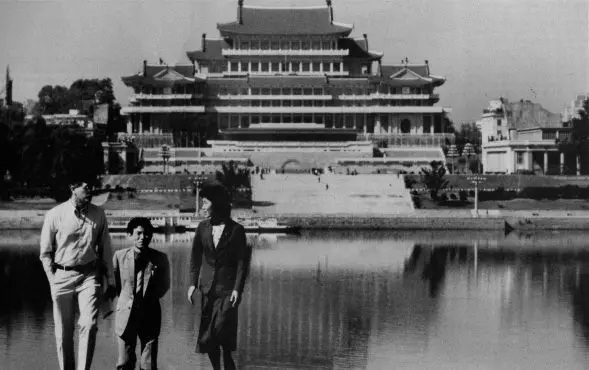
Bulletin: What about the United States conventional military presence in South Korea? How does that fit into Kim’s calculations?
Cumings: The most important thing to say about this is that all kinds of pundits have said a peace agreement will be the first step, and the second step will be Kim Jong-un demanding that US troops withdraw. I’ve tried to knock this down several times (including in the Bulletin, last spring). In the 1990s, Kim Jong-un’s father, Kim Jong-il, told Americans and Kim Dae-jung that North Korea was willing to live with American troops … as long as they stayed in the South. Because North Korea or Korea is surrounded by Russia, China, and Japan and the United States is 6,000 miles away. And if it’s not threatening Korea, then it becomes a balancer of the local powers, all bigger than Korea.
One of the clichés about Korea, which is really stupid, is that it’s a shrimp among whales. That’s not true. North Korea towers over Japan in terms of its ability to destroy Tokyo or anything else in Japan. Not to mention South Korea. But the fact is it’s surrounded by big powers and when Korea first started ordinary normal, modern diplomacy in the 1880s, the king, King Gojong had a policy of trying to draw the US in—to be friendly with Japan, to ally with China—but to bring the US in because it could balance off the other countries.
Bulletin: So, picking up on that general idea a bit: You’ve long advocated for something like a new opening of the American mind to North Korea. Do you think US perceptions have changed since the Singapore summit?
Cumings: Well I think it has changed. Probably since the winter Olympics when Kim’s sister and one of his top aides went to Pyeongchang, to the winter Olympics and they acted like normal, dignified modern people. … And then of course, the Singapore summit.
But you’re right. The caricatures of all three, not just Kim but his father and grandfather, go back 60 or 70 years. I remember in 1967 I went to an amusement park in South Korea and you could throw a ball to knock over a dummy and the dummy was Kim Il-sung with a big boil on his neck. He had a calcium deposit that the North Koreans didn’t like photographed, but foreigners would. South Korean’s would say it was a brain tumor, I mean when was the last time a brain tumor stuck out like a half of a pineapple on someone’s neck? But if you hit the Kim Il-sung dummy, you got a prize.
We’re really talking about a long time of underestimating the North Koreans. Lambasting them. You almost can’t turn on the TV without someone saying this is the most horrible regime on the face of the earth. I actually saw someone say that again today on CNN. And as a specialist, or an expert on it, how many times can you say what a horrible human rights situation they have, without anything changing? Huffing and puffing, trying to blow their house down, and here they are in 2019 with more prestige or power than they’ve ever had before.
So something about our approach is lacking. It’s one of the few regimes, one of the few leaderships, that you can still engage with orientalist tropes, racist tropes, blowing up Kim Jong-il’s head in that movie The Interview. Ultimately, we’ll have a normal relationship with North Korea. And then American’s will find out what I did, when I first went there, which is: These are normal human beings living under a dictatorship that most of them would probably like to get rid of, but doesn’t prevent them from being quite similar to you and me.
Bulletin: You described this Hanoi summit as a kind of symbolic coda to the end of the Vietnam War. What about the coda to the (imminent?) end of the Korean War? After close to 70 years, what would a post-war North Korea look like?
Cumings: Very much like it was before [a peace agreement], I think. North Korea is not going to let down its guard because of the peace agreement. What it does is it allows better relations between the United States and North Korea, between South Korea and North Korea. And it draws attention to the armistice [that’s held] for so long, going back to 1953—as if the Korean peninsula were frozen in time with a Cold War that never ended.
In many ways, a peace agreement doesn’t do away with that. But it lessens the tension and suggests many future possibilities. I think one of these people is going to get the Nobel Peace Prize, if things go well after this summit. I would say President Moon is the one who really deserves it. I can’t imagine them giving it to Chairman Kim, and it’s hard to imagine them giving it to President Trump. But it is a major watershed in modern Korean history and US relations with Korea. It’s a real watershed. And I’m glad it’s happening.
Editor’s note: This interview was condensed and edited for clarity.
Together, we make the world safer.
The Bulletin elevates expert voices above the noise. But as an independent nonprofit organization, our operations depend on the support of readers like you. Help us continue to deliver quality journalism that holds leaders accountable. Your support of our work at any level is important. In return, we promise our coverage will be understandable, influential, vigilant, solution-oriented, and fair-minded. Together we can make a difference.
Keywords: Kim Jong-un, North Korea
Topics: Interviews, Nuclear Risk, Nuclear Weapons


